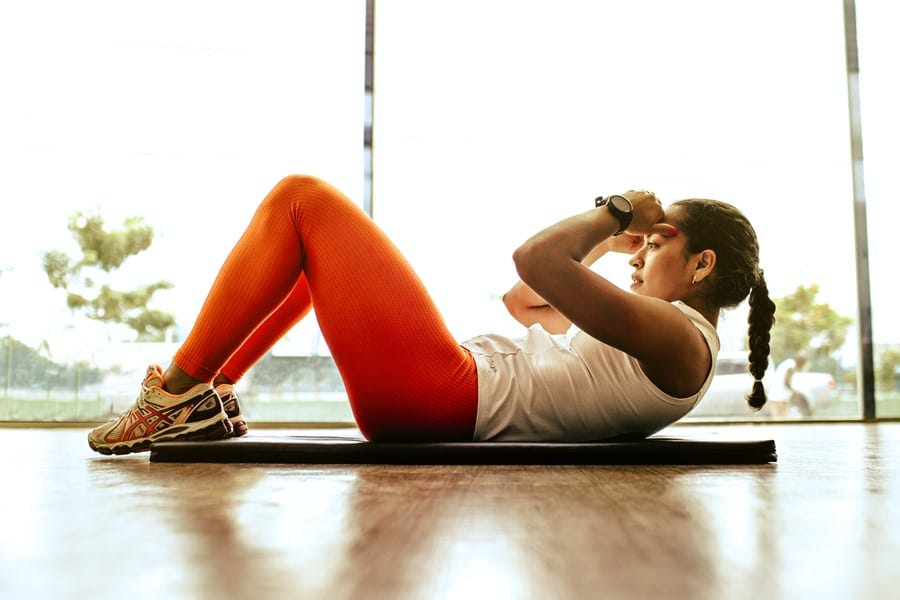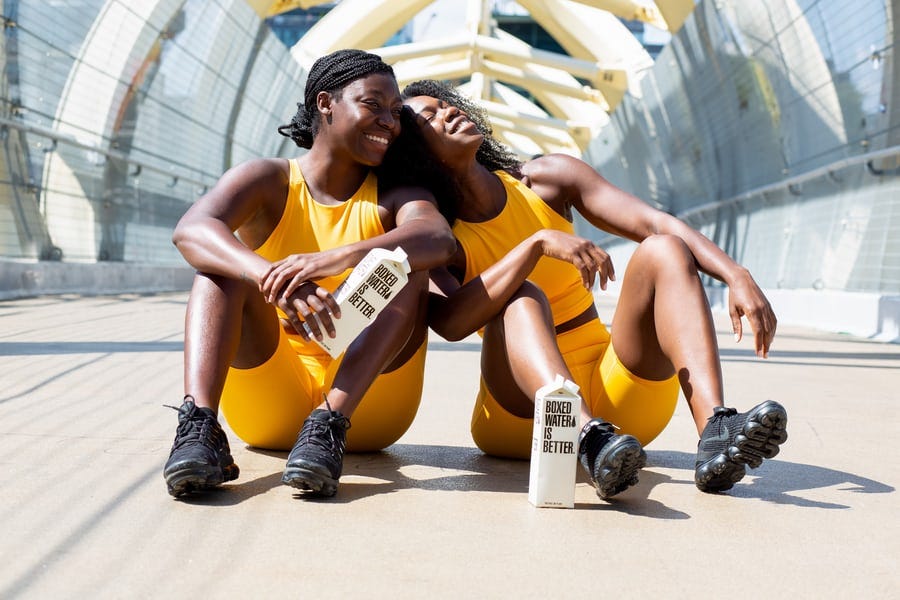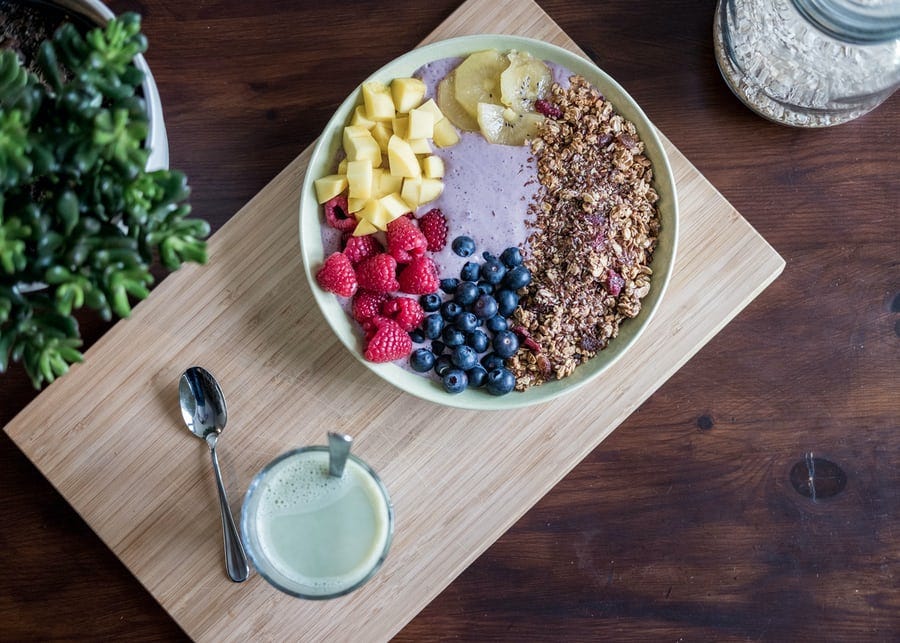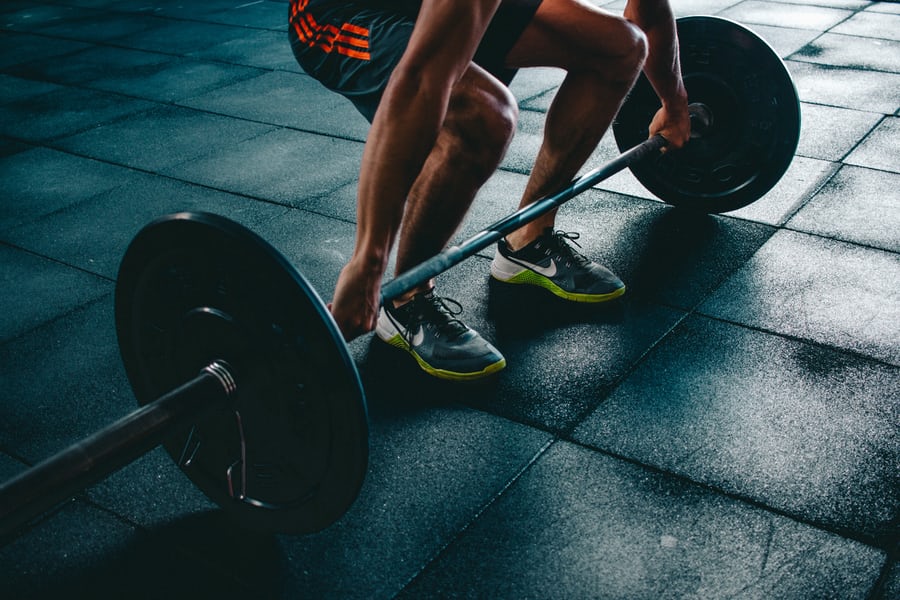Vaccinations are our only true cure towards normalcy. Otherwise, we’ll be pedaling on our Pelotons for years getting nowhere.
With everything still in limbo with record case counts and the new consideration of flurona, covid + flu, nothing seems certain anymore. Deja vu back to 2020 — just not on Wall Street. It’s been too good of a year to remember the brief 35% correction from Feb to March 2020.
Despite the pandemic or it may be primarily because of it, corporate earnings have beat all odds and expectations. Due to higher costs with inflation soaring to 7% in December, higher profit margins are recorded and hiring has been elevated. Yet inflation still remains a top concern for small businesses. Whether it be small to large caps, blue-chip to penny stocks, pandemic accelerated or not, U.S. equities seem to be crushing it regardless with pent-up demand and optimism on the horizon until the rate hikes kick in.
Although we’ve gone through a 3-year above-average run, this coming year doesn’t look as promising mainly due to the Fed’s actions. Never fight the Fed if you haven’t noticed. According to strategists, European and Asian equities are predicted to outperform U.S. equities and international high-yield and investment-grade bonds as well. GDP is expected to be around 4%, around the FOMC’s estimate of 2% inflation.
Once vaccinations rolled out in December of 2020, I was extremely bullish on everything that could possibly exist in-person. Some names that were top of mind at the start of 2021 included, AMC to Planet Fitness (PLNT), LifeTime (LTH) to Carnival Corp. (CCL), Delta (DAL), and Eventbrite Inc (EB). These were platforms and services I wanted to take advantage of until new variants abruptly started popping up, vaccinations paused, and immunity waned with hesitancy. Although at-home players such as Etsy, Peloton (PTON), and Zoom (ZM) saw stellar meteoric rises once lockdowns went into effect, most have dropped down to pre-pandemic levels once again.
As Q4 earnings roll out in the next couple of weeks, only time will tell if markets have moved past at-home drivers and have anticipation on the horizon once again or back to 2020 confusion and fear. The Fed will cause extra volatility in the market since they are fearful of reducing their balance sheet too soon although many European countries had done so months ago. Thankfully Omicron isn’t as lethal as other variants such as Delta so lockdowns aren’t needed yet but it does have a stronger force on workplaces and office closures due to the rampant spread.
No one has a crystal ball and all of us are exhausted by the omnipotent news cycle and constant change, especially in the markets as equities, in particular, have been choppy during the first two weeks of the year due to Fed’s tapering plans and hawkish remarks. All we can do is continue to stay safe, invest prudently, for the long-term, and never get complacent, especially with our health.

Turn It Up
If you have extra time on your hands these days, there’s no better time to start focusing on you. It’s not selfish, it’s selfless to take care of others then. We are living during the age of the Great Realignment after all! It’s going down in the history books. Some journalists call it the Great Reshuffling period yet shuffling seems to denote a negative connotation and we don’t need any more negativity. As someone whose pet peeve is wasting time, although necessary to recover and grow within, I always strive to improve myself whenever I find a moment to breathe. Whether it’s making an active effort to stay infinitely curious through enriching myself in self-help or working on my physical health through being present, getting at least 30 mins of sunshine, getting a good sweat in, and eating mindfully and intuitively, I see a direct correlation in my wealth to health. Although Americans may be one of the wealthiest people in the world, we are the most obese nation with a fast-food chain on every corner. No amount of money can replace your health.
I wrote an article a few months back unpacking the fascinating correlation between what we consume mentally and digestively and what our output results in. You’re not alone if you slipped on your 2020–2021 fitness goals. The top two universal goals at the start of each new year are to get fit and wealthier and both go hand-in-hand and don’t take up as much time or effort as you may assume if you do it efficiently and effectively.
Researchers recommend 2–5 hours of moderately intense aerobic or anaerobic exercises. Depending on your purpose whether it be to shed fat, get lean, build muscle, or feel good enough to go outside, becoming active is always the recipe for success.
It will not only improve your mood, but help you curb your cravings, feel more satiated, rest better, and can help improve your finances as well as long as the costs of doing the activities don’t outweigh the benefits.

#Wellness4Life
Since I was born in the 2000s, I can only speak to the trends that happened afterward and boy have we encountered many wild ones. What’s fascinating is that several from the prior decades such as hand weights, mom jeans, and jeggings have all come back with vengeance. Athleisure has been a hot billion-dollar market since ~2012 and an easy convenient way to dress up or down without having to reinvent yourself. 90% of my closet is athleisure. In terms of exercise, I’ve noticed HIIT workouts for anaerobic activity and quick efficient bursts of exercise are becoming mainstream along with pilates and yoga, focusing on toning muscle instead of strict cardio that research proves isn’t as effective for one’s metabolism or fat burning capabilities throughout the day. Not to mention the craze around meal plans and prep kits. It’s becoming easier to eat healthier but also harder to resist junk fod and proceeded food due to the driving factors: lower cost and easy access.
I’ve always been an exercise fanatic. I believe I adopted this habit from my dad who went to the YMCA each morning before work to swim 10 miles. For the past ~5 years, I seriously haven’t missed a day of moving my body. I need to exercise for at least 1 hour daily. I know it may sound a lot and isn’t realistic for many but if I don’t get in a good sweat and burn, I feel extra sluggish, moody, exhausted, hungrier, HANGRY, and generate brain fog. Intense people do intense things, right? Pain is pleasure!
Beyond exercise which only accounts for roughly 20% of my overall physique and possibly health, nutrients from the food we eat count the most and have a direct impact on our brain power along with sleep. The Pareto Principle applies everywhere, especially within exercise.
Healthcare is a $4 trillion dollar industry. This industry has dispersed into meal kit programs, sleep aids, meditation/mindfulness therapy, PT and stretching, and anything you can think of at this point to improve your body and mind connection.
Meal prep programs and fresh-food meal kits are estimated to be worth $8 billion in 2022. Living and growing up in a European household, eating out or ordering in is foreign to us. Monthly, we rely on ordering ingredients from meal kit programs. Cooking is our style and a therapeutic form of exercise in itself. I know -it seems strange as New Yorkers.
Meal kit delivery and food services are expected to have an annual growth rate of 13% from 2021 to 2028. This market is massive and catching up to the biggest one of all, wellness and exercise.
Simultaneously, food delivery services have become ubiquitous, especially in cities where there are far too many options, not enough time, and long lines just for a cold Sweetgreen salad. That isn’t realistic for a busy New Yorker like myself. The food delivery global market is worth more than $150 billion, roughly 20x greater than meal prep programs due to location inconveniences, price points, budgets, costs, and less reach by mobile users.
The at-home food delivery service market seems to be pretty saturated yet it is incredibly popular and convenient especially when it comes to speed. DoorDash which debuted on the public markets at the end of 2020 surged alongside its competitors UberEats, DoorDash, GrubHub, Postmates, etc. throughout the past 2 years.
Alongside food, the pandemic helped fuel deliveries for everything in general. Amazon fulfills over 100 million orders PER DAY and had its best year yet in 2021 in terms of revenue. Subscription services of all kinds have become incredibly popular such as Rent the Runway, a rental clothing service that went public in 2021. Birchbox, a private company that pioneered the subscription box trend for beauty products alongside ButcherBox both became classic go-to staples during the pandemic as they’ve been able to participate in high fundraising opportunities with VCs, private equity investors, angel and affluent investors making their bets on companies that curbed everyone’s needs during the lockdown. YC is reportedly increasing its Series A investment to $500k up from $250k pumping more liquidity and potential into these next-generation ventures.
Whenever I find myself annoyed about something that in hindsight always ends up seeming aimless and silly, I remind myself that health is wealth. Without it, there’s truly nothing.
“When you are sick, you have 1 problem. When you aren’t, you have a million problems.”
Put life into perspective and remember, just by spending money on self-help to yoga mats, doesn’t mean they will do the work for you. Passive income won’t start out passive. Put in the sweat and tears to gain reward later on. As with everything, it takes time. No quick fix is available in a space notorious for its lofty promises.

Cut The Fat
According to McKinsey, the global wellness market has reached $1.5 trillion, with an estimated annual growth rate of 5-to-10%.
The problem with this industry is the rapid boom in capitalizing on misinformation through social media. If you do engage with YouTube or social media in any sort of way within your exercise regime, I’m sure you’ve come across influencers such as Melissa Wood Health or lifestyle YouTubers who’ve made millions on advertising their products and journies. These folks don’t promote diet fads such as Atkins or BeachBody which is reportedly worth an estimated $1 billion as a digital fitness and nutrition subscription company.
They inspire a lifestyle, a workout that is realistic, calming, affordable, fun, and quick and easy. Many high net-worth individuals and Fortune 500 leaders are even inspired by them. You have to take yourself seriously when you’re at that level.
Yet what seems too good to be true, usually is — specifically within a juicy discounted stock price that ends up dropping to penny stock levels. This resembles Twitter’s ride to die. They are currently trading at lower multiples than when they first debuted all due to a shakeup in management and lost revenue with a poor subscription plan in focus.
If there’s one industry that is easy to get hooked on and fooled by, it’s the fitness industry. We all know the changes and results we want to see don’t get solved overnight yet companies continue to perpetuate this cycle of misinformation and clever marketing leading customers to pay much more for products than what they are really worth.
For example, let’s go shopping for the most popular at-home exercise products. Don’t even get me started on the $500 Equinox Manhattan membership per month. That’s a 2023 prediction.
Now before we dive into these basic yet somehow unique revolutionary marked-up products, let’s understand what you are really paying for and sold.
Glancing at these products’ websites, reviews, and equipment/services, they all advocate for a lifestyle around the lines of self-care, wellness, bliss, peace, and serenity, and on the dark side promote intensity, grit, and resilience.
Nevertheless, whether you are engaging in pilates or an intense SoulCycle class, you want one universal outcome: to feel good and to honestly look better. If looking good was easy, my estimate is that only a third of exercise fanatics would continue working out, possibly myself included at times. That’s just how the world works! We want to look good and by looking good we feel good. There’s nothing wrong with exercising to look good as long as you aren’t triggered or get into a state of body dysmorphia, binge eating/drinking, addiction, or anorexia.
Ultimately, from food to sleep, exercise to TV, moderation is key, especially within the wallet.
Here’s what I mean:
Bala Bangles:
Comfortable colorful resistance weights. Yup. That’s it.
Retail: $50
The One and Only Peloton Classic Bike:
Original Spin bike: $1,495 (no monthly subscription included)
Tread Treadmill: $2,495 (no monthly subscription included)
Mirror Gym:
Lulumemon acquired Mirror for $500 million back in 2020
It is a virtual home gym experience on a gym tha outlook slik a mirror
Retail: $1,195
Practically identical to the Mirror just has more capabilities with a personal trainer and hidden behind the mirror/screen option to store away equipment
Retail: $2,695
An upgraded mirror with a personal trainer and entire modern gym setup
Retail: $2,995.00
Rowing machine
Retail: $2,295
Lululemon Reverible Mat:
Yup, just a yoga mat for yoga that’s it.
Somehow on sale for $69
(None of the links are sponsored or affiliates)
Most of these products clearly cost more than what you’re getting. The price is built in the brand recognition and equity not always the quality. A plain old yoga mat for $70? Is it made of gold?
Now since I only own a Peloton, I cannot comment upon the rest but Lululemon is known for being an overpriced luxury athletic brand that unfortunately isn’t interested in democratizing fitness. It is targeted for those that can also own AirPods, a Range Rover, and WFH at least 4x a week getting by wearing athleisure for all those days.
Despite the high costs, lack of in-person connection, subscription fatigue, and maintenance, there are tremendous benefits that at-home fitness provides. This market has flourished and been available at the most opportune time. The reason I have a spin bike is for the cost of time. There’s no doubt it saves me at least 30 minutes from hopping on and off and being able to ride my bike whenever, wherever not obligated to take a class at a certain time and commute there. Just like remote work, there will always be pros and cons and I’ve stuck with it.
Although Peloton may not be slaying it in the portfolio with its poor marketing plugs, slow deliveries, poor earnings results, stock price slump, and supply chain constraints, I believe it is a brand that will fare better than in-person gyms or to say the least, Crocs.
But what would be most appealing for them as a brand is to become more affordable. Everyone deserves to be strong and feel good. Although exercise doesn’t HAVE to come at a cost, owning a spin bike provides an extra push for those lazy bums to work out.
As for gyms, they will open up in full capacity eventually and are still in use across the country as people are crammed at home. Once inflation and supply chain constriants cool down, I’m confident Planet Fitness will be engaging at least a good part of the planet again as we head into a new normal with an endemic that never seems to have an end in sight.

